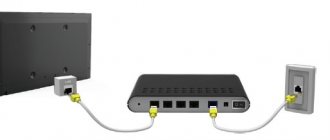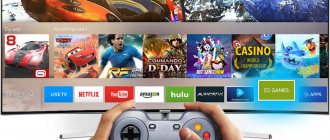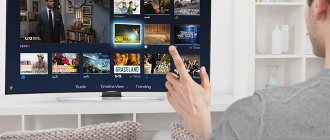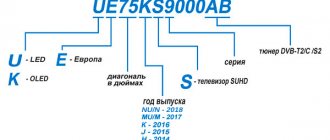History of the system
Until recently, fiber optic cable was not perceived as a tool for high-quality sound transmission. It is known that fast data transmission is possible only with light. Optical technology was first used in the photophone developed by Alexander Bell.
Optical telephone communication proved the possibility of transmitting a signal through the air, but the inventor’s idea itself did not take root. The physicist's achievements began to be used for communication between ships, but nothing more.
The widespread use of fiber optic technologies began only in the mid-20th century, and a major breakthrough that brought digital audio out to the masses occurred in 1980 with the invention of fiberglass wire, which was capable of transmitting a light signal.
Despite the fact that the optical input celebrated its 40th anniversary, it is still considered the best in terms of analog sound transmission quality, which cannot be matched by the “tulip” HDMI cable, which appeared much later.
Basic operating principle
An optical cable connected to digital audio out consists of a shell and a core.
Accepted standards for TV input, the same for Samsung, LG, and other manufacturers, consist of several stages of information transportation:
- generation of a light signal from an electrical one;
- its retransmission from output to input without loss of power or distortion;
- reception of a signal by an incoming device;
- reverse transformation of the signal into an electrical one.
An optical cable connected to digital audio out consists of a sheath and a core. During production, attention is paid to the complexity of connecting connectors, with which you can connect two devices to each other.
Violation of technology significantly spoils the quality of transmitted sound, making the use of optical connections useless. That is why music lovers purchase industrial-cut cables of a certain length.
Advantages of optical output
The main advantage of fiber optic audio transmission lines is the almost complete absence of sound distortion from electromagnetic fields, which are abundantly present in the human environment. Here, cables with metal conductors can noticeably lose to fiber optic systems in high-quality audio signal transmission. As a result, the speaker system will produce distorted sound.
In addition, when using an optical transmission channel, complete galvanic isolation between the transmitting and receiving devices is achieved. This also has a positive effect on the quality of audio signal transmission. Parasitic interference from bad ground buses is the scourge of audio equipment. The optical systems themselves do not create electromagnetic interference.
Types of speaker systems
At the moment, the choice of speaker systems (AS) for TV is huge. There are special devices designed directly for TV, as well as universal speakers that can quite successfully interact with television receivers . Therefore, before purchasing, you should find out about existing types of acoustics that can be synchronized with a television panel. This:
- regular computer speakers (active or passive);
- music or multimedia center;
- home cinema;
- wireless speakers;
- soundbar.
You can also use all-in-one PCs or laptops with built-in speakers as an external means for audio output. However, in this case, the TV receiver will not act as a signal source, performing the functions of only a second monitor, so there is no point in considering this type of speakers as full-fledged acoustics. And those who still decide to connect these devices will need HDMI for these purposes.
Types of fiber optic cable
To send an audio signal over an optical channel, the sound is first converted into digital form, then, using an LED or solid-state laser, it is sent via an optical audio cable to the signal recipient - a photodetector.
Fiber optic conductors are divided into two main types:
- Monomode;
- Multimode.
In multimode light fluxes may have a spread in wavelengths and trajectories, which can lead to signal distortion over long conductor lengths. The light emitters in such sound transmission channels are LEDs, inexpensive and durable semiconductor devices. The length of the connectors does not exceed 5 meters. The diameter of the central light-conducting fiber is 62.5 microns. The outer shell of the light guide has a size of 125 microns.
For your information. The main advantage of multimode cable is its relative low cost, which is why it is widely used.
In a monomode conductor, light rays move rectilinearly, signal attenuation and distortion are minimal. The diameter of the light fiber is 1.3 microns, the signal wavelength is also 1.3 microns. Such a connector can be longer than a multimode connector. The light source in this case is a semiconductor laser, emitting signals with a strictly regulated wavelength. However, a laser is a more expensive and less durable device than an LED. As a result, the system becomes more expensive than a multimode system, although it has better parameters, in particular, the length of the conductor can be tens of meters.
Purpose and equipment of a home theater
A home theater is a whole set of equipment designed for high-quality video and sound transmission. Such a cinema hall allows you to organize a full-fledged entertainment area in your living space.
The main purpose of a cinema is to create and enhance the effect of presence for the viewer. The number of functions of the entire system is determined by its configuration and the capabilities of individual devices.
set of home cinema includes the following equipment:
- playback device (signal source);
- receiver;
- screen (display device);
- acoustic system.
The system may also include power amplifiers and various stands (stands). All equipment is connected to each other using wires and cables. Acoustics are represented by speakers and a subwoofer.
Each device in the system performs a specific role. Only when fully equipped do the cinema's functionality reach its maximum.
Comparison with HDMI
Modern manufacturers provide a wide choice when connecting audio devices through a home theater. As a result, you can get amazing results. The most popular method at the moment is connecting via an HDMI cable. This way you can transmit not only audio, but also the video signal is transmitted in high resolution.
When equipment with such an interface appeared on the market, optical fiber and its audio output faded into the background, since the wire can only transmit an audio signal, and separate switching is required for video.
But, despite the fact that the connection standard has been in use for 30 years, it is still relevant today. Optical wire is still used to switch up to 7.1 channels of high-resolution audio.
The wire is used due to the use of conventional receivers that have high quality and an optical input on the port. If a person loves good sound on his TV, it makes no sense for him to replace these devices with new ones. It is worth noting that most players or HDTVs and game consoles still use an optical port.
When you turn on radio equipment or a TV, interference may occur due to poor or no grounding. In such situations, a hum begins in the speaker system.
It is necessary to isolate the equipment using an optical wire. HDMI, which is familiar to many, cannot cope with this task. Speakers with an optical input are more reliable. Previously, this method was used to connect equipment to a music center via an optical cable.
Thanks to its unique parameters, the sound quality between the optical cable and HDMI is very good.
Therefore, the old TV cable has not lost its significance in modern days. You can easily connect your home theater to your 2021 TV. The picture and sound quality will be very high.
A “radical” way to connect headphones to a TV
If the design of the TV receiver does not have any of the above types of sockets, there is no Bluetooth (or the connection of wireless Bluetooth headphones is not supported), you can always take “radical” measures to connect headphones. The method involves embedding your own AUX socket into the TV receiver by soldering it parallel to the speakers (i.e., to the same contacts where the speakers are soldered). For these purposes, you will need an AUX jack with a mechanical switch that serves to mute the sound in the speakers when headphones are connected. Otherwise, the sound will be sent to both the speakers and the head microphones at the same time.
So, what type of connection should you choose?
The answer depends on the system you have. If you need to make a choice strictly between coaxial and optical connections, choose the first option. In our experience, a coaxial connection usually provides higher sound quality than an optical connection due to greater detail and increased dynamics.
However, we live in an era focused on maximum convenience. HDMI has become the standard for all audio and video devices today, and it seems reasonable to use it as long as all components in the system have it.
HDMI's functionality, upgradeability, and simultaneous audio and video capabilities make it easy to avoid cluttering cables around your devices. And most importantly, you don’t have to sacrifice quality.
Types of inputs and connectors on LG TVs
Initially, you will need to understand what outputs are present on the TV. Only after this can you connect the speakers.
In the production of modern televisions, types of audio and television connectors are used, through which you can connect different acoustics for watching television:
- tulip (RCA);
- line output;
- jack for headset or headphones.
- HDMI ARC port.
The first option is used to connect active speakers that have a built-in amplifier. Options No. 2-3 are used if the device does not have special connectors. That is, the speakers are connected to the built-in amplifier in the TV.
HDMI ARC is ideal for newer technology. For example, an audio system for a home cinema, which features high-quality sound.
Optical digital connection
In an optical digital connection, data is transmitted through a fiber optic cable (the fibers of which can be made of plastic, glass or quartz) using light. In this case, noise from the source is not transferred to the DAC circuit, as can happen with a coaxial one, so it is reasonable to use it when connecting the device directly to the DAC of a soundbar or AV receiver.
Traditionally, in DC systems, optical cables are used to transmit compressed multi-channel audio in Dolby Digital and DTS formats. Those with a Toslink connector (Toshiba Link) connect to the corresponding ports of the source and AV receiver. A good starting option is the QED Performance Graphite Optical cable.
Many manufacturers have moved to HDMI as the primary connector type, but optical outputs are still regularly found on devices such as game consoles, Blu-ray players, set-top boxes and televisions. The corresponding inputs can be found on the amplifier or DAC side - for example, in sound bars or AV receivers.
As with coaxial connections, one of the problems with optical connections is the lack of bandwidth to transmit lossless audio formats, such as Dolby TrueHD or DTS-HD Master Audio, which contain most soundtracks on Blu-ray discs. In addition, the optical connection is not capable of transmitting more than two uncompressed channels to the PCM. Finally, the optical cable can be damaged if it is bent too much.
Connecting wireless headphones to a TV without a Bluetooth module
This is a special case of using wireless head-mounted microphones in conjunction with televisions (Smart TV only). It consists of connecting an external Bluetooth module (audio transmitter) to the TV receiver.
To do this, the design of the television receiver must have a USB port, but this is not the only requirement. Not all modern Smart TVs (as well as Smart TV set-top boxes) support the function of redirecting audio signals from speakers to a USB port. Therefore, before purchasing a Bluetooth module, you should make sure that your existing TV receiver has the appropriate functionality. This information can be found in the technical documentation for your TV or Smart TV set-top box.
What does the optical output look like on a TV?
The TV has a large number of connectors. One of them is for optical signal transmission. This port is easy to recognize thanks to the trapezoidal plug, which is labeled Optical Audio, Digital Audio Out , or Toslink .
When the device is turned on, a red light will appear around the port to let users know how to connect the device. Therefore, connecting an optical cable to a TV is a simple matter.
Features of connecting speakers to TVs of different brands
How to connect speakers to a TV in different ways is described above. But many buyers are interested in questions about whether there are nuances of connecting speakers to TV from different manufacturers, whether Korean Samsung products will differ from the Japanese Sony or the little-known Chinese manufacturer Kivi. As practice shows, there are no significant differences in connectors, since all of the above outputs are created for specific tasks, and not a single manufacturer can give preference to any one port, since it will deprive its buyer of the opportunity to connect the TV with peripheral devices .
However, many well-known manufacturers, such as Philips or Panasonic, sometimes do not place a 3.5 headphone output on the TV. Many companies consider the SCART connector to be another “relic” of the past. All manufacturers annually update their TV lines and series. It’s easy to see from them how TVs lost some connectors from year to year. For example, the Bravis series from Sony today does not have SCART and 3.5, although several years ago they still had them.
This may seem strange, but as the series grows, not only the technical characteristics change, but also the appearance - the panels become thinner and more beautiful, and this entails the need to abandon not the most popular interfaces. In particular, it will be more difficult to find out-of-date SCART and 3.5 in the 7 series than in the 5 or 6.
Optical cable parameters for a high-quality connection
To connect an optical cable to the device while maintaining high sound performance, you need to follow the following rules:
- The length of the wire should not exceed 10 meters. The best option is 5 meters. In this case, the quality of signal transmission will remain unchanged. Also, some manufacturers produce thirty-meter cables that transmit the signal without interruption. But the quality will depend on the receiving device.
- The thicker the cable, the longer it will last.
- The highest quality options are additionally equipped with a shell made of nylon fabric.
- It is important to pay attention to the type of core. Suitable options are silica or glass. They significantly exceed plastic ones in quality.
- Bandwidth must be high. A good cable has between 9 and 11 MHz. This indicator should be chosen if a multi-channel sound system with a significant sampling frequency is installed at home.
Passive loudspeakers
Such acoustics do not have a built-in amplifier, which changes the order in which the system is connected to the TV. For these devices, you will first need to connect the speakers to the amplifier, and then run wires from it to the screen.
When figuring out how to connect a subwoofer to a TV, you need to consider the following:
- The amplifier power should not exceed the speaker power by more than 30%. The connection is made using cables with a cross-section of at least 1 square meter. cm or more. The thicker the wire, the more reliable the connection.
- the rated output impedance of the amplifier must match the impedance of the speakers;
- It is important to maintain the correct polarity: connect the left channel to the left channel, and the right channel to the right channel. Failure to comply with this rule may result in poor sound quality.
Note! For stereo systems consisting of several speakers with a passive system, you can connect the equipment through the AV receiver using a cable.
Connoisseurs of good sound can use devices of any power, enjoying high-quality sound. You can select equipment by ear, but technical characteristics are no less important. The clearest and most pleasant sound is transmitted through the HDMI output, since only a high-quality digital signal is transmitted through it.










